Data Virtualization vs Data Warehouse: Essential Differences Explained
When should you use data virtualization instead of a data warehouse?
This article will compare both—data virtualization vs data warehouse—to help you choose the best approach for your needs.
Key Takeaways
-
Data virtualization enables real-time access to data from multiple sources without physical movement, enhancing integration efficiency and agility.
-
Data warehousing serves as a centralized repository for structured historical data, relying on ETL processes for data preparation, which can limit real-time access and flexibility.
-
A hybrid approach that combines data virtualization and data warehousing leverages the strengths of both technologies, improving data management and operational efficiency while addressing integration challenges.
Understanding Data Virtualization

Data virtualization technology is a revolutionary approach in the realm of data management. Unlike traditional data warehouses, it does not require physical data movement or consolidation into a single repository. Instead, data virtualization creates a virtualized architecture layer that connects disparate data sources—data virtualization can connect to different databases seamlessly—allowing users to access data in real-time, directly from its source. The data virtualization layer consolidates and abstracts data from multiple sources, providing a single access point. This technology ensures that the data stays in its original location, enabling access and integration without the need to copy data. It provides a unified data access layer that facilitates agile management of diverse data sources. Data virtualization can also serve as a central data platform for the organization.
One of the standout features of data virtualization is its ability to provide real-time updates. This ensures that the information accessed by users is always accurate and up-to-date, reflecting the latest changes made in the underlying data sources. Additionally, data virtualization helps break down data silos by integrating data from different databases and platforms. Enabling seamless access to multiple data sources without data replication, data virtualization significantly enhances the efficiency and speed of data integration processes.
The Essence of Data Warehousing

Data warehousing has long been a cornerstone of enterprise data management. Serving as a central storage for large amounts of organized, past data, a data warehouse is designed to facilitate business intelligence activities, focusing on analytics and historical reporting. A data warehouse often acts as a new data store where data from various sources is collected for analysis. Typically, data warehouses utilize relational databases, which are optimized for efficient management and retrieval of information in data engineering. In contrast, a data lake serves as a storage repository for unstructured data, providing a flexible and scalable source for big data analytics, unlike the structured approach of data warehouses. Additionally, a data store can complement these systems by providing flexible access to various data types.
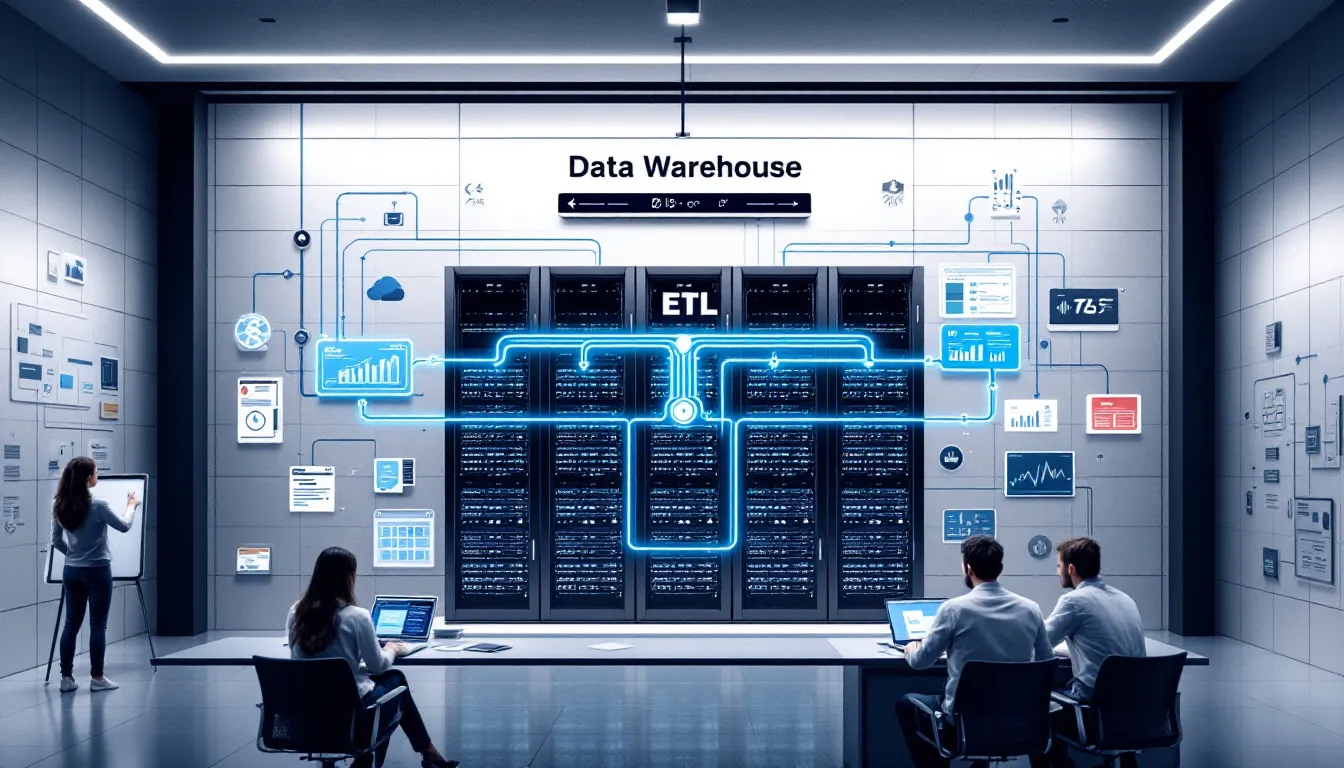
The architecture of a traditional data warehouse can vary, ranging from simple designs to complex hub-and-spoke models. These structures are built around subject-oriented data, allowing for focused analysis on specific business areas such as sales, finance, and operations. However, while data warehouses provide significant benefits in terms of detailed historical analysis, they also come with certain limitations, such as the need for extensive ETL (Extract, Transform, Load) processes and potential delays in accessing real-time data.

These ETL processes often involve moving and transforming raw data into a structured format suitable for analysis. When implementing data warehouses, relational databases are commonly used; SQL Server, for example, is a popular platform for both data warehousing and creating virtualized views.
Despite these limitations, data warehousing remains a powerful tool for organizations looking to consolidate their historical data and perform in-depth analyses. Archiving historical data allows businesses to improve operational efficiency and decision-making capabilities, making data warehousing an essential component of their data architecture.
Key Differences Between Data Virtualization and Data Warehouse

Several key differences emerge when comparing data virtualization and data warehousing. A data warehouse typically serves as a centralized repository for structured data, while data virtualization allows for real-time access to data from multiple sources without storing it in one place. This means users can access and query data as if it were in one location, streamlining analysis and decision-making. This fundamental difference has significant implications for how each approach handles data integration and access.
Data warehousing relies heavily on ETL processes to prepare and organize data, making it less flexible for real-time data access compared to data virtualization.
In contrast, data virtualization can quickly integrate new data sources without extensive reconfiguration, providing immediate insights from diverse and dynamic data sources.

Data virtualization also provides fast access to data across multiple systems, enabling organizations to respond rapidly to business needs. This flexibility is particularly beneficial for enterprises that need to adapt quickly to changing data landscapes.Another critical difference is how these technologies handle data queries and the technical aspects involved. Data pipelines and data warehouses are optimized for complex queries and historical analysis, often relying on batch processing, which can lead to delays in accessing real-time data in a physical data warehouse.
On the other hand, data virtualization excels in providing immediate insights by querying data directly from its source system, without the need for physical data movement. This capability makes data virtualization vs a powerful tool for organizations that require real-time data access and integration across multiple systems. This approach also improves the accessibility and usability of an organization's data, supporting better data-driven decisions.
Data Integration: Virtualization vs. Warehousing
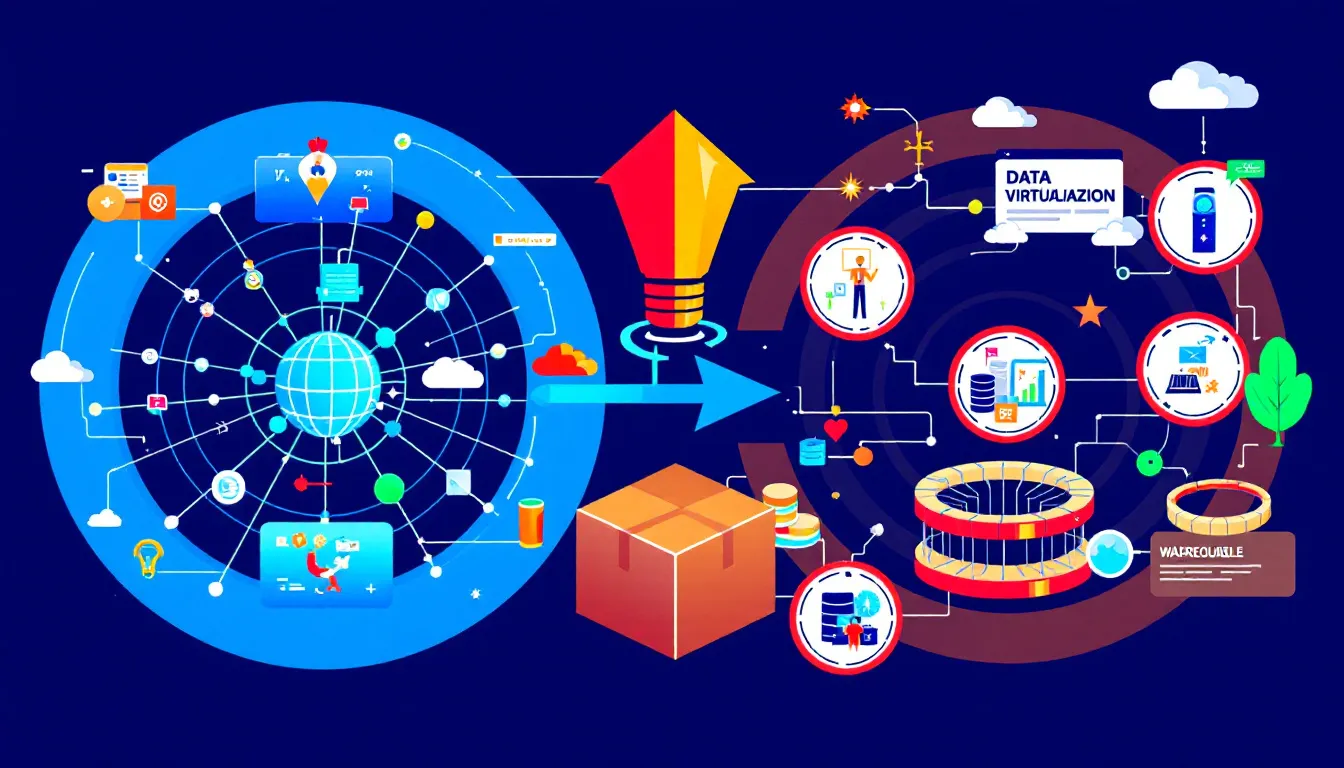
Data integration is a critical aspect of any data management strategy. Data virtualization allows real-time querying of data from various locations without moving it, contrasting sharply with data warehousing, which requires data to be copied to a central repository. This eliminates the need for moving data into a central repository, which is a key difference from traditional data warehousing. This ability to access data across various systems without physically moving or consolidating it facilitates faster data integration, making it a more agile solution for today’s dynamic data environments.
While a traditional data warehouse involves complex ETL processes to extract, transform data, and load data into a central physical repository, extracting data virtualization simplifies access by querying data in its original locations. This approach not only reduces the time and cost associated with data integration but also provides a unified view of transforming data from diverse origins without the need for physical data replication.
Factory Thread: Bridging the Gap Between Virtualization and Warehousing in Manufacturing
When evaluating the best strategy between data virtualization and traditional data warehousing, Factory Thread offers a compelling hybrid solution purpose-built for manufacturing environments.
Real-Time Virtualization, Built-In
Factory Thread provides a logical data layer that connects directly to ERP, MES, CRM, and quality systems—offering real-time access without duplicating or moving data. Unlike traditional data warehouses that rely heavily on ETL pipelines, Factory Thread’s virtualization engine lets you query live data as it exists in the source, enabling instant decision-making with the most up-to-date information.
Low-Code, Rapid Integration
Whether you're syncing work orders between Siemens Opcenter and SAP, or generating real-time production KPIs, Factory Thread allows users to build and deploy data flows in minutes using a low-code visual interface or its AI workflow assistant. This significantly reduces the time and cost of traditional data warehouse implementations.
Compatible With Data Warehousing
Rather than forcing a binary choice, Factory Thread enhances existing data warehouse investments. Use it to virtualize newer data sources or to expose live operational data while maintaining your historical warehouse. This hybrid model supports the strengths of both approaches: real-time agility from virtualization, and deep historical analysis from warehousing.
Enterprise-Grade Scalability and Governance
With support for on-prem, edge, and cloud deployments, Factory Thread adapts to any infrastructure while maintaining robust security through role-based access and audit-ready monitoring. Its centralized governance capabilities ensure consistent policies across all data sources—structured or unstructured.
Tangible Business Impact
Organizations using Factory Thread report:
-
Faster Time-to-Integrate: Reducing integration cycles from weeks to days
-
Real-Time Operational Dashboards: Empowering front-line decision-making
-
Zero Downtime During Upgrades: Thanks to its non-disruptive, virtualized architecture
By choosing Factory Thread, manufacturers can eliminate data silos, streamline analytics, and gain agility—delivering a smarter, more efficient path forward in the debate between data virtualization and warehousing.
Performance and Scalability Considerations

Performance and scalability are crucial considerations when choosing a data management solution. A data virtualization solution supports both transactional and analytical data, providing a flexible solution that can scale with the needs of the business and integrate with analytical systems.
This flexibility allows many organizations to handle various data workloads efficiently, ensuring that both real-time operations and long-term analytical needs are met through machine learning.
Cost Efficiency in Data Management
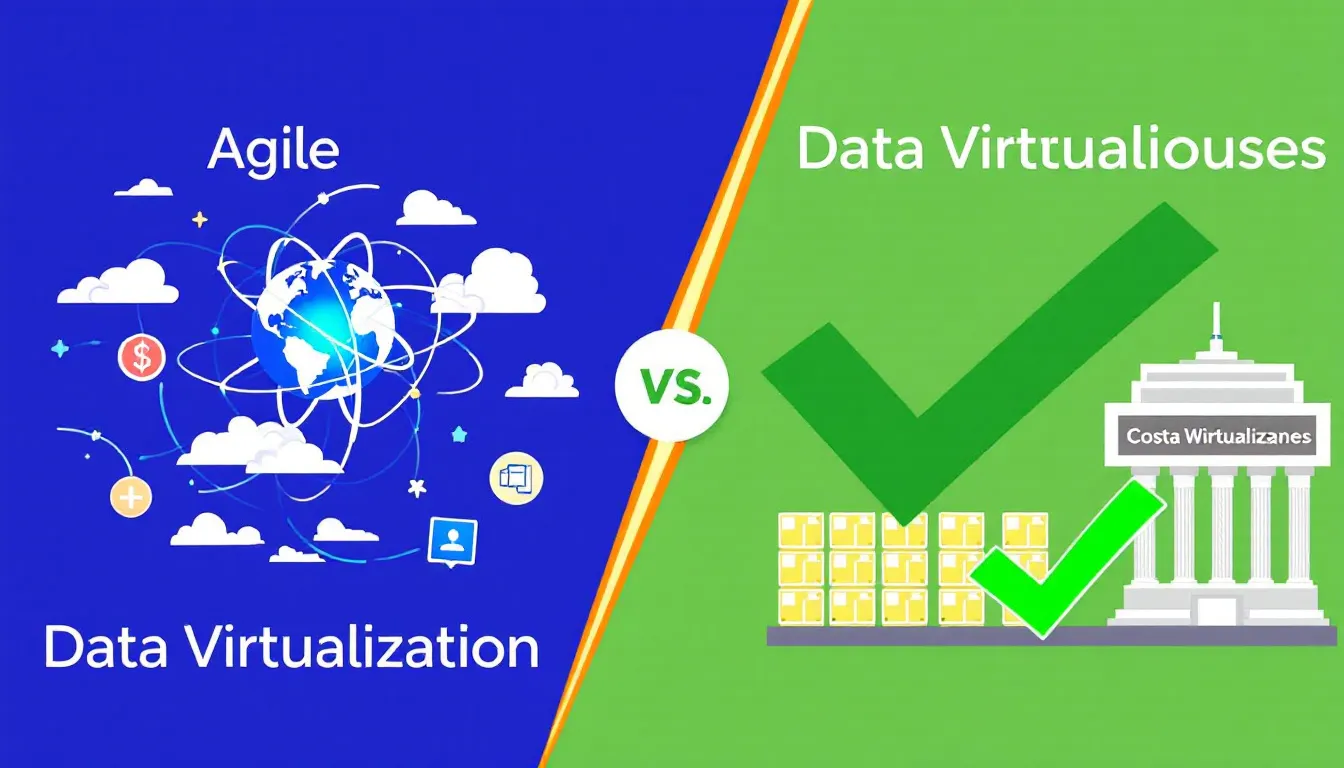
Cost efficiency is a major factor in data management decisions. The cost structure of data warehouses often involves high initial investments and ongoing maintenance, whereas data virtualization typically has lower upfront costs but can incur higher operational expenses. This difference can significantly impact an organization’s budget and resource allocation, making cost effective solutions essential.
Deploying data virtualization reduces overall costs since it eliminates the need for extensive data copying and transformation, which are essential in data warehouse setups. Organizations can achieve a ‘single source of truth’ with data virtualization at a fraction of the cost associated with physical data warehousing. Additionally, the lack of extensive ETL processes in data virtualization further contributes to its cost efficiency.
Another advantage of data virtualization is its ability to provide real-time access to data without requiring the archiving of historical data like traditional data warehouses. This not only enhances operational efficiency but also reduces the costs associated with data storage and maintenance.
Real-Time Data Access and Analytics

In today’s fast-paced business environment, real-time data access is crucial for making timely decisions. Data virtualization provides real-time access to data, ensuring that businesses have the most up-to-date information at their fingertips. This capability is particularly valuable in sectors like finance, healthcare, and retail, where timely decisions can significantly impact outcomes.
Unlike traditional data warehouses that aggregate historical data, data virtualization enables real-time data access and integration across various sources. This allows organizations to access live data while avoiding the operational overhead and complexity involved in data warehousing. The result is a more agile and responsive data management strategy that can adapt quickly to changing business needs.
Real-time data access helps businesses make timely and informed decisions, enhancing their competitive edge. Avoiding the need for data replication and reducing latency, data virtualization allows organizations to integrate new data sources rapidly and efficiently. This capability also supports rapid prototyping of data solutions, enabling organizations to quickly test and iterate on analytics projects. This is essential for businesses that need to respond quickly to market changes and customer demands.
Use Cases and Applications
Data virtualization and data warehousing each have unique use cases and applications that can significantly benefit organizations. These technologies integrate data from various sources into a single virtual layer, promoting efficient decision-making and enhancing business intelligence by providing a unified data view for better analysis and reporting.
Enhancing Enterprise Data Management
Data virtualization serves as a central access layer, enabling business users to find and utilize enterprise data from various sources seamlessly. This integration facilitates a cohesive data access layer, enhancing the ability of enterprises to manage and utilize data from multiple databases efficiently. Data virtualization simplifies key processes, making data accessible for reports and dashboards. Establishing this virtual layer and abstraction layer allows companies to significantly enhance their development speed, enabling rapid application and product launches without the delays associated with data migration.
Enterprises utilize data virtualization to streamline data access and management, helping them respond rapidly to changing business needs. The main advantage of data virtualization is speed-to-market, where solutions can be built faster than traditional data warehouses. This capability is particularly valuable in dynamic business environments where agility and responsiveness are key to staying competitive.
Optimizing Business Operations
Data warehousing is designed primarily to facilitate business intelligence activities, focusing on analytics and historical reporting. Data consolidation of historical data and sales data improves operational efficiency and decision-making capabilities. This is particularly beneficial for organizations that require detailed historical reporting to inform their business strategies.
While data warehousing excels in detailed historical reporting, data virtualization vs data offers greater flexibility for data exploration. This allows business professionals to access real-time data and perform ad-hoc analyses, optimizing business operations and enhancing overall business value.
Supporting Big Data Analytics
Data virtualization integrates multiple data sources, making it essential for performing complex analytics on big data. Allowing access to large data sets from various data source without extensive data replication, data virtualization enables comprehensive analysis and enhances the ability to perform complex analytics.
This capability is particularly valuable for organizations leveraging big data analytics to gain insights and drive business decisions. By facilitating access to diverse data sources, data virtualization enhances the scope and depth of analytical insights, supporting more informed decision-making processes.
Choosing the Right Solution for Your Business Needs
Choosing between data virtualization and data warehousing depends on several factors, including the characteristics of the data, existing infrastructure, and specific business needs. Data virtualization allows for enhanced data governance by centralizing management and security protocols for diverse data assets. It can also help organizations address regulatory constraints by enabling data access and integration without physically moving or copying data, thus simplifying compliance with data privacy and security requirements. However, maintaining data governance across multiple heterogeneous sources can be challenging.
The implementation of data virtualization is generally faster compared to building a data warehouse, which often involves complex procedures and long timelines. Additionally, if a data warehouse is already in place, data virtualization can enhance its capabilities without disrupting current operations.
Ultimately, selecting the appropriate data management framework is crucial to meeting business needs and improving overall efficiency.
Implementing a Hybrid Approach
Combining data warehousing and data virtualization can provide a balanced approach to data management. This hybrid strategy leverages the strengths of both technologies, offering comprehensive data management and integration capabilities. By providing a unified view of data across various sources, data virtualization enhances operational efficiency.
However, integrating data from hybrid systems can be complex due to different systems of access methods and data storage approaches across various platforms and disparate sources and source systems. Despite these challenges, implementing a data fabric can significantly reduce integration design time and maintenance efforts, providing a more efficient and streamlined approach to data management, data mesh, and data federation. Hybrid cloud environments are becoming the standard for corporate data management, further emphasizing the need for efficient integration strategies.
How Modern Tools Can Help
Modern data virtualization tools play a crucial role in enhancing data management strategies. Tools like Dremio, SAP HANA, and Denodo Platform provide comprehensive data abstraction and quick data access from various sources, significantly enhancing analytics capabilities. Cisco Data Virtualization is known for its ability to integrate diverse data sources while maintaining a real-time connection.
These tools enable organizations to create logical data lakes, consolidate multiple data sources, and provide real-time data connectivity across various applications, databases, and APIs. A data lake serves as a flexible repository for unstructured data, and data virtualization tools can integrate data from both data lakes and structured sources. By leveraging these modern data platforms, businesses can ensure better integration and access to data engineers, supporting more efficient and effective data management strategies.
Summary
Summing up, both data virtualization and data warehousing offer unique advantages and play crucial roles in data management. While data warehousing provides a robust solution for historical data analysis and business intelligence, data virtualization excels in offering real-time data access and integration across multiple sources. Understanding these differences is essential for making informed decisions about your data management strategy.
As you navigate the complexities of data management, consider the specific needs of your organization, the nature of your data, and the existing infrastructure. By selecting the right solution or even implementing a hybrid approach, you can enhance your data architecture, improve operational efficiency, and drive better business outcomes. Embrace the power of data management to stay competitive in today’s data-driven world.
Frequently Asked Questions
What is the main difference between data virtualization and a data warehouse?
The main difference is that a data warehouse functions as a centralized repository for structured data, whereas data virtualization enables real-time access to data from diverse sources without requiring storage in a single location.
Share this
You May Also Like
These Related Stories
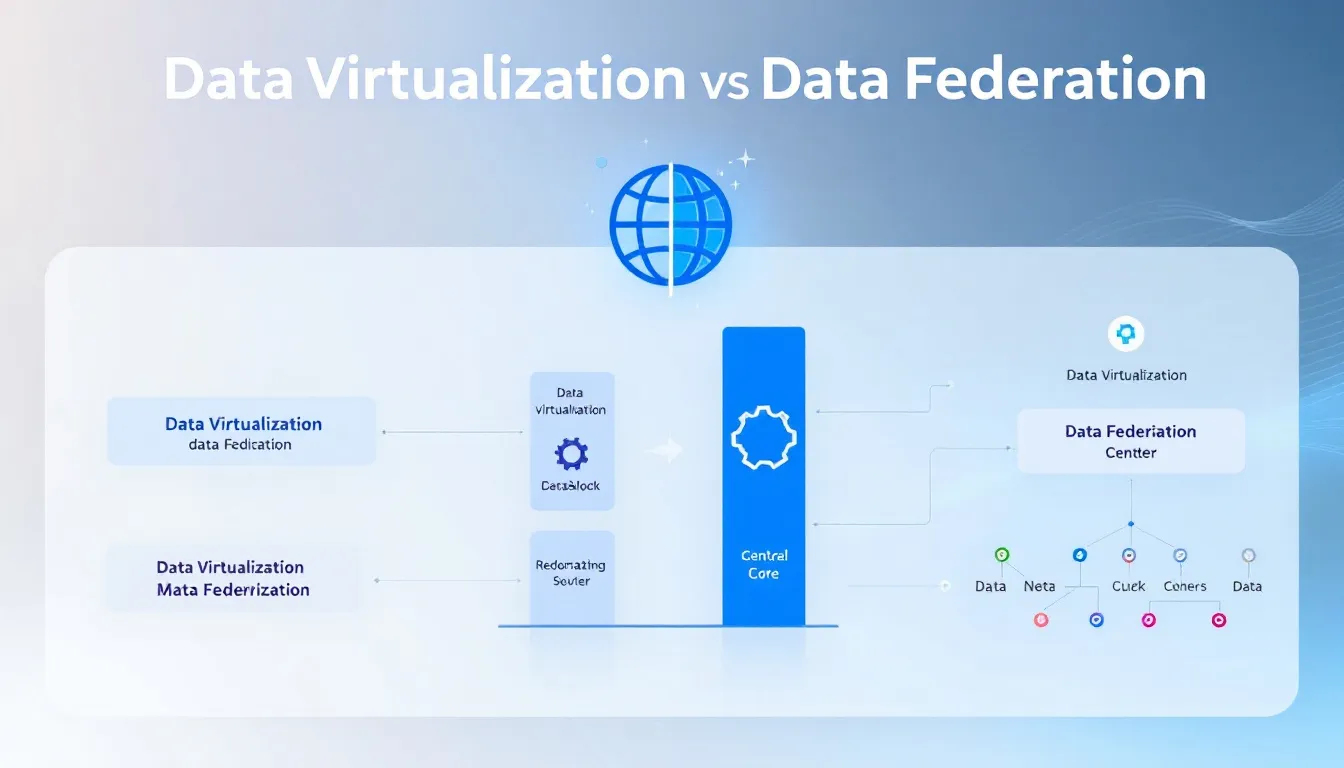
Data Virtualization vs Data Federation

Data Virtualization vs Data Lake: Making the Right Choice for Your Business
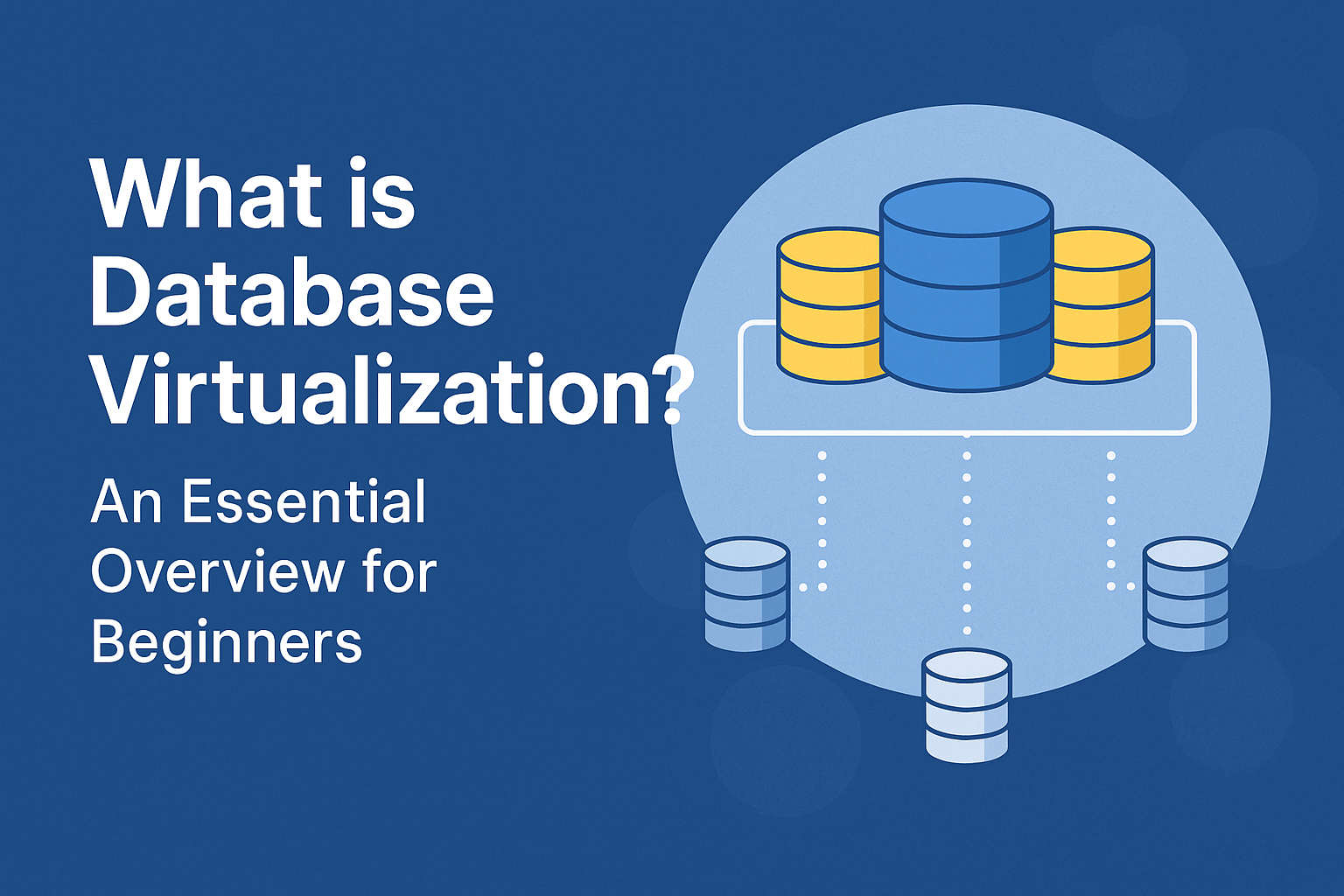


No Comments Yet
Let us know what you think